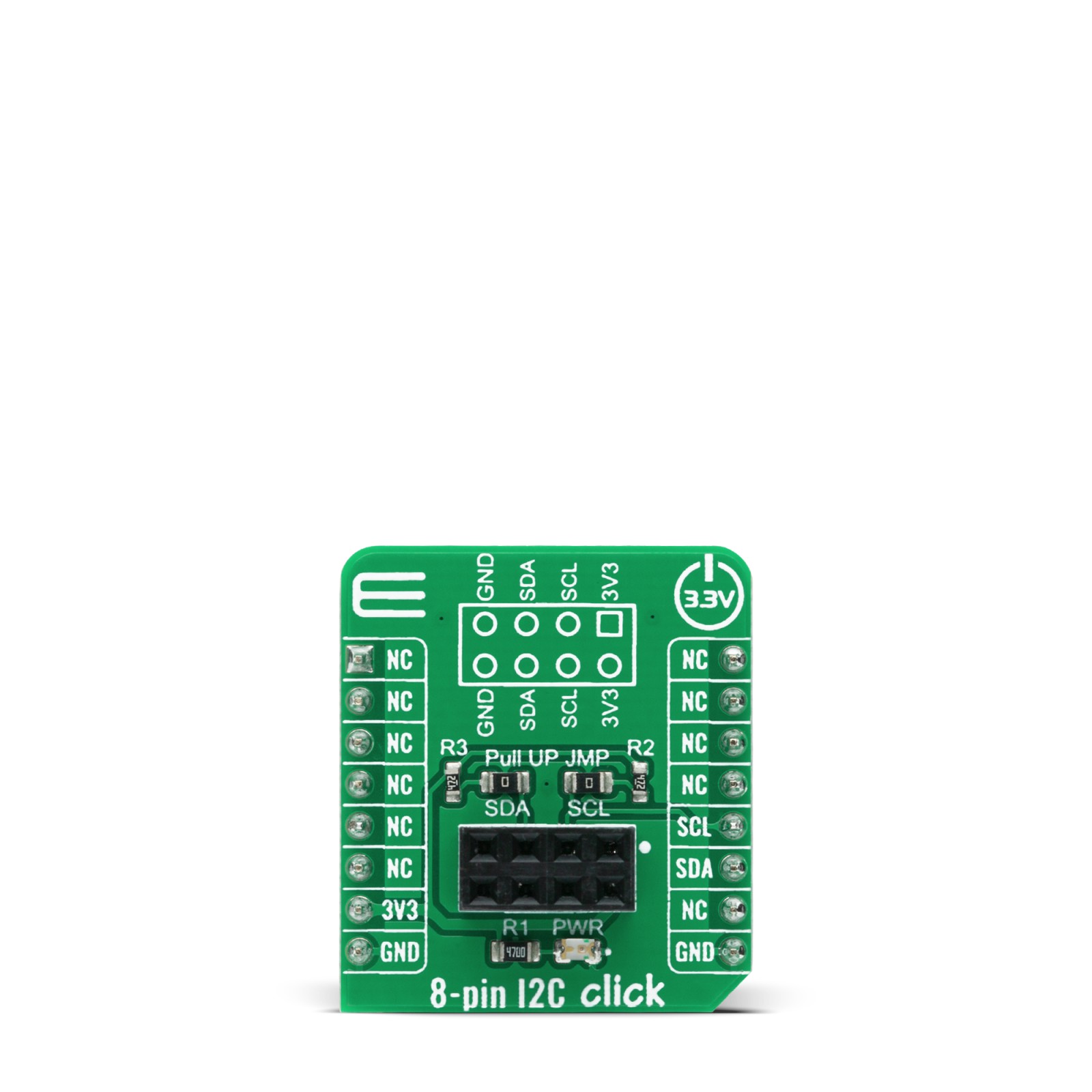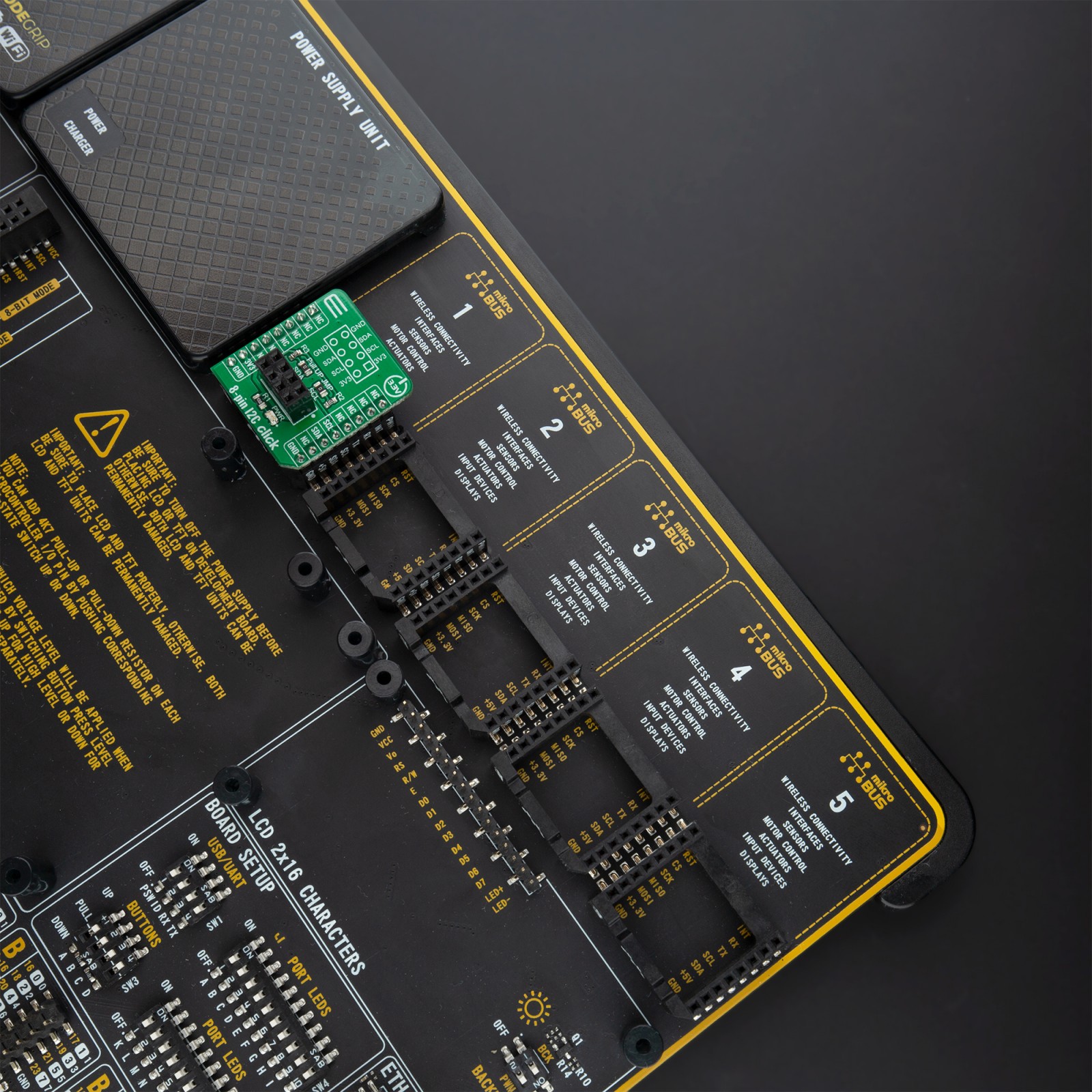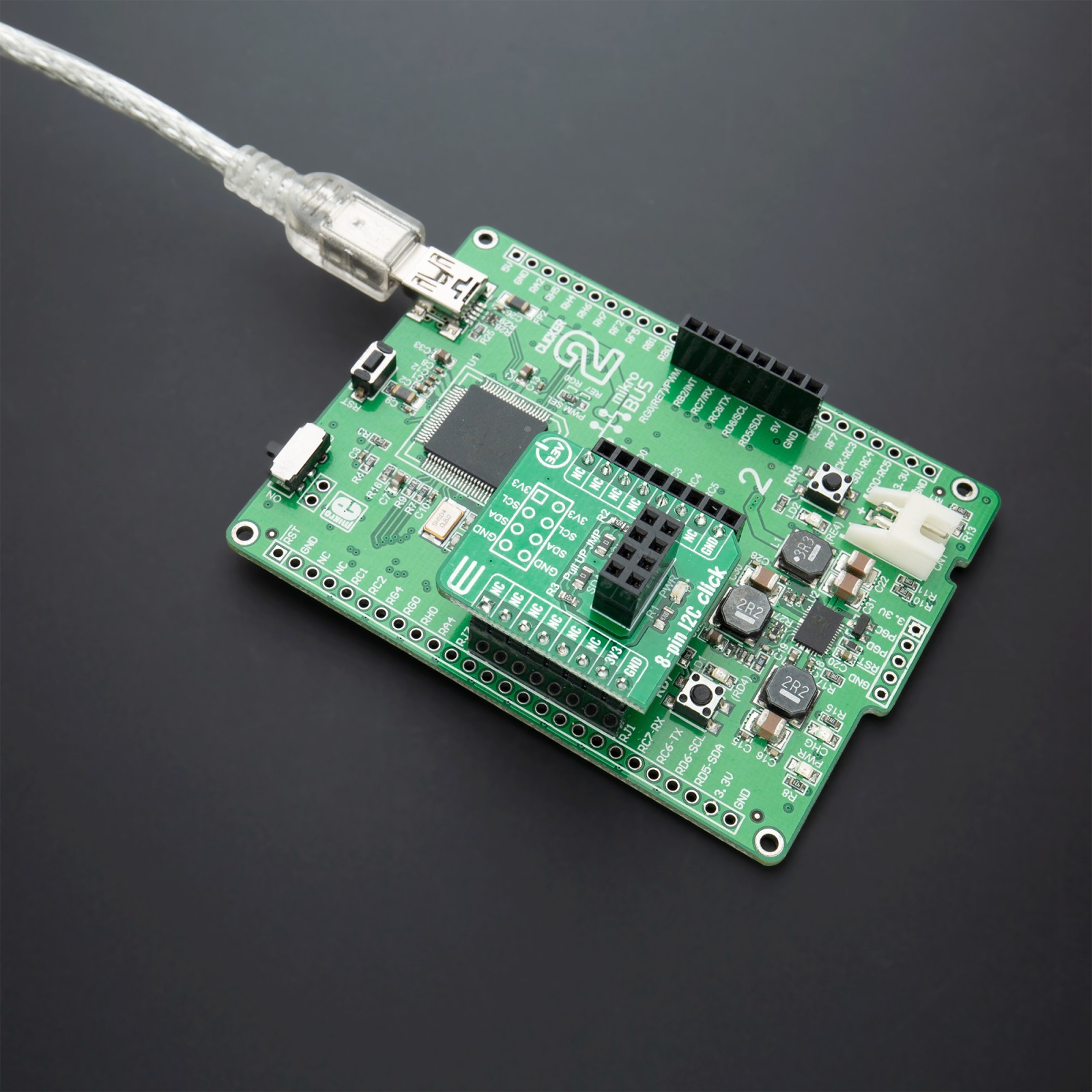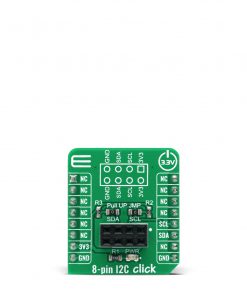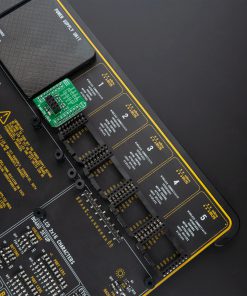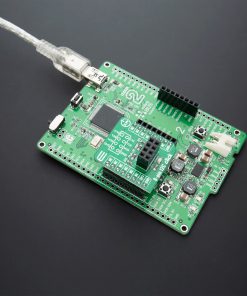8-pin I2C Click
R150.00 ex. VAT
8-pin I2C Click is a compact add-on board that represents a breakout board that simplifies the connection of add-on boards with 8 pin Female Connector to mikroBUS™ socket. This board can be used as I2C Adapter with no main component on itself, with only an on-board connector for connection establishing. 8-pin I2C Click has no regional restrictions, no need for special permits, and it is possible to use this Click board™ worldwide. Being compatible with MFI (Made for iPod) is the most important feature of the 8-pin I2C Click board™ which ensures its proper operation with additional Apple accessories. This Click board™ is suitable for expanding the connectivity of the development system with the mikroBUS™, and ideal for communication with numerous devices that share the identical slave address on the same bus.
8-pin I2C Click is supported by a mikroSDK compliant library, which includes functions that simplify software development. This Click board™ comes as a fully tested product, ready to be used on a system equipped with the mikroBUS™ socket.
Stock: Lead-time applicable.
| 5+ | R142.50 |
| 10+ | R135.00 |
| 15+ | R127.50 |
| 20+ | R122.70 |

